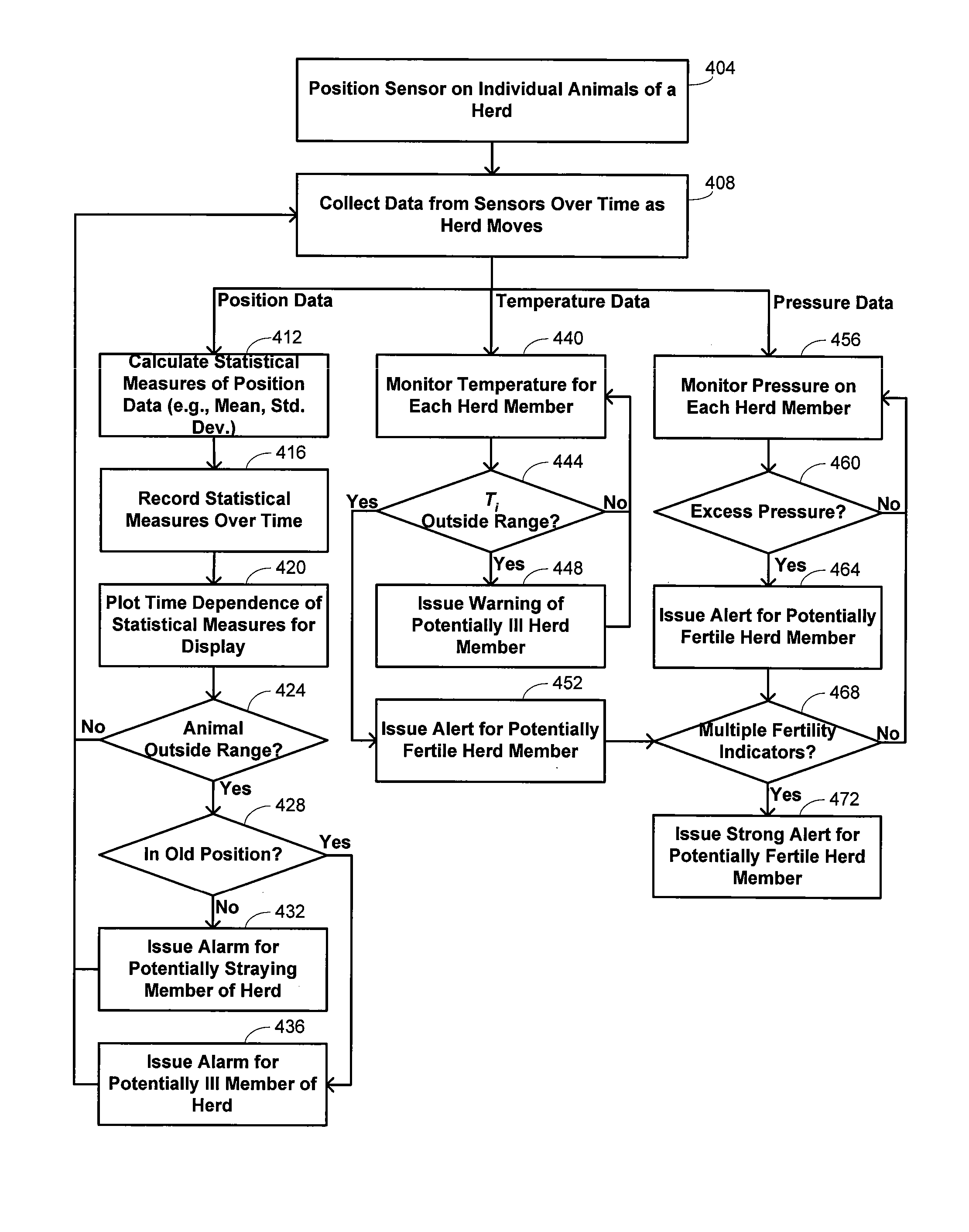Animal-herd management using distributed sensor networks
- Summary
- Abstract
- Description
- Claims
- Application Information
AI Technical Summary
Benefits of technology
Problems solved by technology
Method used
Image
Examples
Embodiment Construction
[0020] Embodiments of the invention provide methods and systems for managing animal herd populations. While certain embodiments discussed in detail herein refer to livestock populations, the invention may more generally apply in some embodiments to managing other types of animal herds. References herein to a “herd” are thus intended to refer generically to a group of animals that generally feed and travel together, or are generally kept together, although it is recognized that some animals might sometimes leave the herd and other animals might sometimes join the herd. The herd populations may generally be any type of animal, including mammals, birds, and fish. References to “livestock” herds are intended to refer to groups of domesticated animals, many examples of which include animals raised for food, wool, leather, or other human products. For instance, livestock herds might include cattle, sheep, chicken, horses, and the like, while other non-livestock herds might include bison, ...
PUM
 Login to View More
Login to View More Abstract
Description
Claims
Application Information
 Login to View More
Login to View More - R&D
- Intellectual Property
- Life Sciences
- Materials
- Tech Scout
- Unparalleled Data Quality
- Higher Quality Content
- 60% Fewer Hallucinations
Browse by: Latest US Patents, China's latest patents, Technical Efficacy Thesaurus, Application Domain, Technology Topic, Popular Technical Reports.
© 2025 PatSnap. All rights reserved.Legal|Privacy policy|Modern Slavery Act Transparency Statement|Sitemap|About US| Contact US: help@patsnap.com



